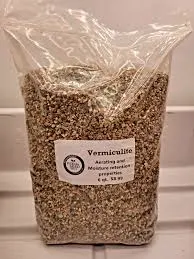Oct . 12, 2024 22:07 Back to list
Comparing Perlite and Vermiculite for Gardening and Horticultural Applications
Perlite vs. Vermiculite A Comprehensive Comparison
When it comes to gardening and horticultural practices, two names frequently come up perlite and vermiculite. Both of these materials are used to improve soil aeration, drainage, and moisture retention, yet they have distinct characteristics and serve different purposes in plant care. This article will delve into the properties, uses, and advantages of perlite and vermiculite, helping you decide which is best for your gardening needs.
What is Perlite?
Perlite is a naturally occurring volcanic glass that, when heated, expands rapidly into a lightweight, porous material. This expansion occurs at temperatures around 1,600 degrees Fahrenheit (870 degrees Celsius), resulting in the white, pebble-like granules that are commonly used in gardening. Perlite is primarily used for its excellent drainage properties and aeration capabilities. Its structure allows for the free flow of air and water around plant roots, which is essential for healthy growth.
What is Vermiculite?
Vermiculite, on the other hand, is a mineral derived from mica, which expands when heated to about 1,400 degrees Fahrenheit (760 degrees Celsius). This process creates spongy, accordion-like particles that are light and absorbent. Vermiculite is known for its moisture retention capabilities and ability to hold nutrients, making it a favored medium for seed starting and propagation. It helps maintain a balanced moisture level in the soil, ensuring that plants receive consistent hydration.
Key Differences
1. Water Retention One of the most significant differences between perlite and vermiculite is their ability to retain water. Vermiculite can hold large amounts of moisture and nutrients, making it ideal for moisture-loving plants and seedling starters. Perlite, in contrast, offers minimal water retention, promoting quick drainage. This characteristic makes it perfect for plants that thrive in drier conditions or require excellent drainage, such as cacti and succulents.
perlite versus vermiculite

2. Nutrient Retention Similarly, vermiculite excels in nutrient retention. It can hold onto essential nutrients, making them easily available for plants. Perlite, however, does not retain nutrients well and is often used in conjunction with nutrient-rich soils or fertilizers.
3. pH Level Perlite has a neutral pH, while vermiculite tends to be slightly alkaline. Depending on the plants you are growing, this may influence your choice. Acid-loving plants might prosper better with amendments that are more neutral.
4. Weight In terms of weight, both materials are lightweight, but perlite is slightly lighter due to its more porous nature. This can be advantageous for potting mixes that require mobility or ease of handling.
When to Use Each
Choosing between perlite and vermiculite largely depends on your specific gardening requirements. If you are growing plants that require excellent drainage and aeration, such as succulents and orchids, perlite is the better choice. On the other hand, if you're starting seeds or growing moisture-loving plants, vermiculite would be more suitable due to its moisture and nutrient-retaining capabilities.
Conclusion
In conclusion, both perlite and vermiculite are invaluable in horticulture, each serving its unique purpose. Understanding the differences between them can significantly impact the health and growth of your plants. By selecting the right medium based on your gardening goals, you can create an optimal environment for your plants to thrive, ensuring a flourishing garden. Whether you choose perlite for its drainage properties or vermiculite for its moisture-retaining abilities, both materials can enhance your gardening experience and lead to healthier plants.
-
Eco-Friendly Granule Covering Agent | Dust & Caking Control
NewsAug.06,2025
-
Fe-C Composite Pellets for BOF: High-Efficiency & Cost-Saving
NewsAug.05,2025
-
Premium Tundish Covering Agents Exporters | High Purity
NewsAug.04,2025
-
Fe-C Composite Pellets for BOF | Efficient & Economical
NewsAug.03,2025
-
Top Tundish Covering Agent Exporters | Premium Quality Solutions
NewsAug.02,2025
-
First Bauxite Exporters | AI-Optimized Supply
NewsAug.01,2025
